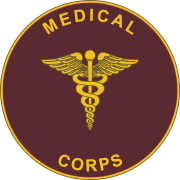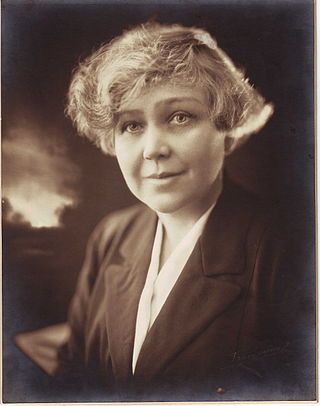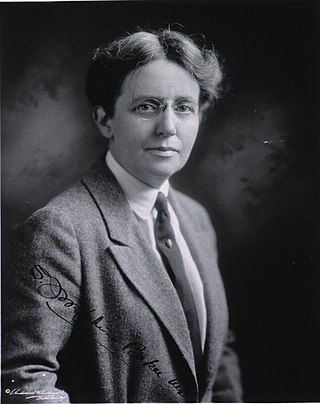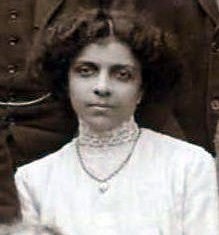
Virginia Apgar was an American physician, obstetrical anesthesiologist and medical researcher, best known as the inventor of the Apgar score, a way to quickly assess the health of a newborn child immediately after birth in order to combat infant mortality. In 1952, she developed the 10-point Apgar score to assist physicians and nurses in assessing the status of newborns. Given at one minute and five minutes after birth, the Apgar test measures a child's breathing, skin color, reflexes, motion, and heart rate. A friend said, "She probably did more than any other physician to bring the problem of birth defects out of back rooms." She was a leader in the fields of anesthesiology and teratology, and introduced obstetrical considerations to the established field of neonatology.

Uniformed Services University of the Health Sciences (USU) is a health science university and professional school of the U.S. federal government. The primary mission of the school is to prepare graduates for service to the U.S. at home and abroad as uniformed health professionals, scientists and leaders; by conducting cutting-edge, military-relevant research; by leading the Military Health System in key functional and intellectual areas; and by providing operational support to units around the world.

The Medical Corps (MC) of the U.S. Army is a staff corps of the U.S. Army Medical Department (AMEDD) consisting of commissioned medical officers – physicians with either an M.D. or a D.O. degree, at least one year of post-graduate clinical training, and a state medical license.
The London School of Medicine for Women (LSMW) established in 1874 was the first medical school in Britain to train women as doctors. The patrons, vice-presidents, and members of the committee that supported and helped found the London School of Medicine for Women wanted to provide educated women with the necessary facilities for learning and practicing midwifery and other branches of medicine while also promoting their future employment in the fields of midwifery and other fields of treatment for women and children.

Helen Mary Mayo was an Australian medical doctor and medical educator, born and raised in Adelaide. In 1896, she enrolled at the University of Adelaide, where she studied medicine. After graduating, Mayo spent two years working in infant health in England, Ireland and British India. She returned to Adelaide in 1906, starting a private practice and taking up positions at the Adelaide Children's Hospital and Adelaide Hospital.

Emily Dunning Barringer was the world's first female ambulance surgeon and the first woman to secure a surgical residency.

Sara Josephine Baker was an American physician notable for making contributions to public health, especially in the immigrant communities of New York City. Her fight against the damage that widespread urban poverty and ignorance caused to children, especially newborns, is perhaps her most lasting legacy. In 1917, she noted that babies born in the United States faced a higher mortality rate than soldiers fighting in World War I, drawing a great deal of attention to her cause. She also is known for (twice) tracking down Mary Mallon, better known as Typhoid Mary.

Rear Admiral Bonnie Burnham Potter was the first female physician in the Navy Medical Corps to be selected for flag rank. She served as the commanding officer of the National Naval Medical Center at Bethesda, Maryland and Chief of the Navy Medical Corps.
A clinical officer (CO) is a gazetted officer who is qualified and licensed to practice medicine.

Yvette Roubideaux is an American doctor and public health administrator. She is a member of the Rosebud Sioux Tribe of South Dakota.
Jerusha Jacob Jhirad FRCOG, MBE was an Indian physician.

The history of medicine in the United States encompasses a variety of approaches to health care in the United States spanning from colonial days to the present. These interpretations of medicine vary from early folk remedies that fell under various different medical systems to the increasingly standardized and professional managed care of modern biomedicine.
Marilyn Hughes Gaston is a physician and researcher. She was the first black woman to direct the Bureau of Primary Health Care in the U.S. Health Resources and Services Administration. She is most famous for her work studying sickle cell disease (SCD).
Kathryn Dorothy Duncan Anderson is a British-American pediatric surgeon. She was the first woman to hold office in the American College of Surgeons and the first woman president of the American Pediatric Surgical Association. She was a Nina Starr Braunwald Award laureate.
Lori Arviso Alvord is a Native American surgeon and author. She is perhaps best known for being the first Diné woman to ever become board certified in surgery. Her autobiography, The Scalpel and the Silver Bear, has brought increased attention to her career as a surgeon and has sold over 50,000 copies. Dr. Alvord was also nominated to serve as the U.S. Surgeon General in 2013. Dr. Alvord uses new techniques that bring together Navajo healing techniques and modern Western Medicine.

Margaret Cornelia Morgan Lawrence was an American psychiatrist and psychoanalyst, gaining those qualifications in 1948. Her work included clinical care, teaching, and research, particularly into the presence and development of ego strength in inner-city families. Lawrence studied young children identified as "strong" by their teachers in Georgia and Mississippi, as well as on sabbatical in Africa in 1973, writing two books on mental health of children and inner-city families. Lawrence was chief of the Developmental Psychiatry Service for Infants and Children at Harlem Hospital for 21 years, as well as associate clinical professor of psychiatry at Columbia University College of Physicians and Surgeons (P&S), retiring in 1984.

Dossibai Rustomji Cowasji Patell MBE, MRCP, later known as Dossibai Jehangir Ratenshaw Dadabhoy, was an Indian obstetrician and gynaecologist, who in 1910 became the first woman to become a member of the Royal College of Surgeons of England (RCS).
Angela Okolo is a Nigerian professor of pediatrics and child health, neonatologist in the department of Pediatrics, Federal Medical Center, Asaba and President of the Nigerian Society of Neonatal Medicine (NISONM).

Virginia A. Caine is an American physician who is the director and chief medical officer of the Marion County Public Health Department in Indianapolis, Indiana. She is a specialist in infectious diseases and is nationally recognized for her work with AIDS and sexually transmitted diseases. She is an Associate Professor of Medicine for the Infectious Disease Division of the Indiana University School of Medicine and an Adjunct Associate Professor in the School of Public Health.











